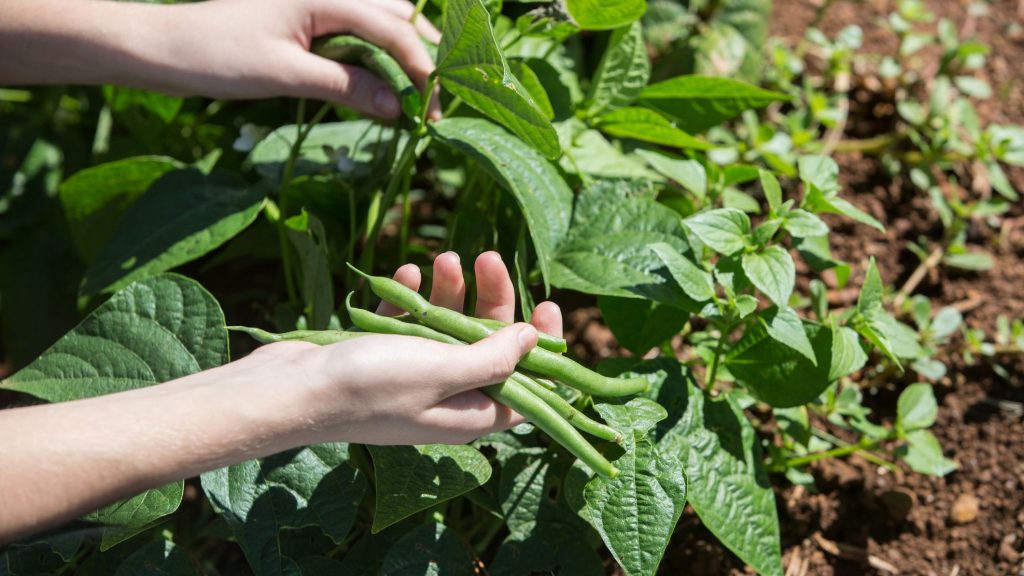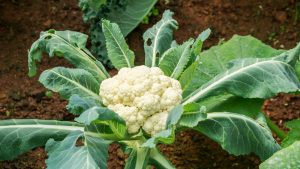
Here you will discover when to plant green beans according to the temperatures necessary for the plants’ germination and development, avoid the risk of frost, strong winds, and take into account the time that the crop needs to develop.
When to plant green beans?

As we saw in the general article about bean cultivation (you have the link at the end), it is a plant that needs the soil temperature to be at least 10 ° C so that the seeds can germinate. And the ideal would be to wait for it to warm up a little more, since otherwise, it will take longer to hatch and, in the meantime, it may rot if the ground becomes too wet, in case it rains.
We can accelerate the healing of the soil by removing the vegetation that covers it, mulches, etc., so that the sun hits the earth directly. Making furrows, beds, or raised terraces will also heat up faster, as long as there is sun, of course.
Therefore, the temperature of the soil already has to give us an idea of when we can sow the beans. But it is true that, both in summer, early autumn, and in spring, the soil can be more than 10 ° C and, nevertheless, all these dates may not be suitable for sowing beans, since you have to keep in mind count other aspects. The risk of frost is that although the bean is quite resistant to cold, early ice (in autumn) or late (in spring) can cause serious damage to the leaves and tender shoots, flowers, and fruits.
Another thing to keep in mind is that the bean does not grow if the temperature is below 8 ° C, so in the months in which this condition may occur, it is not worth having the beans on the ground. It will be better to wait.
If it is very hot in summer – especially if the climate is very dry and warm – it is advisable not to sow until temperatures moderate and take advantage of the autumn to develop the crop. If this is not possible, we can always sow in spring once there is no longer a risk of frost.
Likewise, if strong winds can occur at any time of the year, it will be necessary to avoid planting the beans until the risk disappears. This is especially important for tall bush varieties, as they can act like a sail and exert a lot of resistance to the wind. The damage caused could be very severe. Although they are also sensitive to strong wind in those with low bush, it is easier to have some type of structure that acts as a barrier or to plant them next to a wall, hedge, etc.
Sowing dates
In most varieties of beans, the sowing date indicated by the seller usually ranges from mid-winter to mid-autumn. From February to October (Northern hemisphere) or from August to April (Southern hemisphere). Keep in mind that this is broadly speaking and perhaps true for equatorial, tropical or coastal climates. For the rest of the temperate climates, the interval will have to be restricted a little, and more the colder the local climate.
Jewish planting dates
The usual thing for most temperate zones, where it can freeze in spring, is to wait until mid or late spring to make the first sowing of the year. In this way, we ensure rapid germination – thus reducing the risk of seed rot – and pleasant temperatures for the crop to develop properly. Remember that the development of bean plants is maximum between 18 and 30 ° C and, for flowering and fruiting, it prefers values between 15 and 25 ° C.
From this moment on, we can carry out staggered plantings during the rest of spring and summer, avoiding the hottest months if the weather is extreme. We can also place a shading mesh to reduce the incidence of sun. After the heat has passed, we can re-sow at the end of summer and in autumn, taking into account that the bean crop will need about 3 months of margin before the arrival of the first frosts. So if the first autumn frosts usually arrive in November, the last beans will have to be sown in August.





